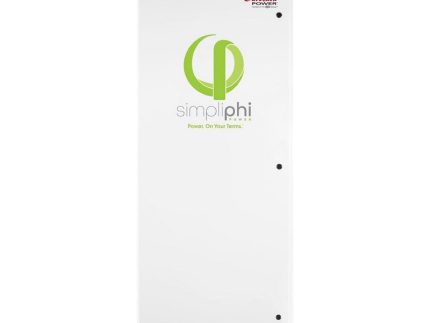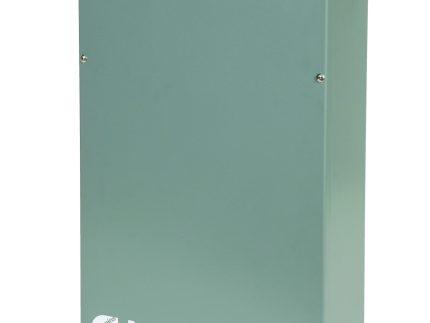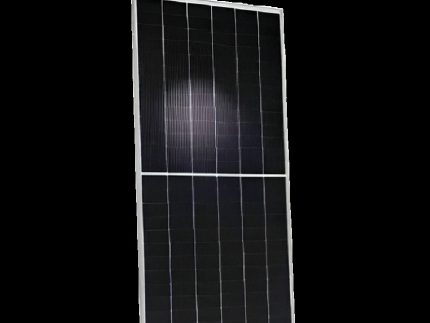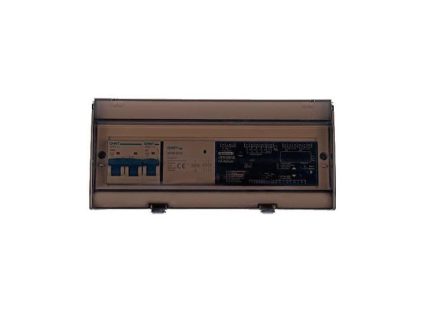Unlocking Peak Solar Efficiency: How 580W Microinverters Revolutionize Energy Output for Homes and Businesses

In the dynamic realm of solar technology, 580W microinverters are emerging as a transformative force, redefining how we harness and optimize solar energy. These advanced microinverters are engineered to maximize solar panel efficiency, enabling both homeowners and businesses to achieve unprecedented energy output. As we explore the myriad benefits of this cutting-edge innovation, you’ll discover how enhanced solar performance translates into tangible savings and sustainability. From boosting energy independence to offering a scalable solution for diverse energy needs, 580W microinverters stand at the vanguard of solar technology benefits, promising a brighter, more efficient future. Join us as we delve into how this state-of-the-art advancement is setting new standards in the quest for peak solar efficiency.
Introduction to 580W Microinverters
The advent of 580W microinverters represents a significant leap in solar energy technology. This section examines the fundamentals of these innovative devices and their role in enhancing solar panel efficiency.
What Are 580W Microinverters?
580W microinverters are cutting-edge devices designed to convert DC power from individual solar panels into AC power for residential or commercial use. Unlike traditional string inverters, these microinverters function at the panel level, optimizing energy conversion for each solar module independently.
Microinverters play a pivotal role in maximizing solar panel efficiency by mitigating the effects of shading, debris, or panel mismatch. This panel-level optimization ensures that the underperformance of one panel does not impact the entire system.
The 580W capacity of these microinverters allows them to handle high-output solar panels, making them ideal for modern, high-efficiency solar installations. This sophisticated technology represents a major advancement in maximizing energy harvest from solar arrays.
Evolution of Solar Panel Efficiency
The journey of solar panel efficiency has been marked by continuous innovation and technological breakthroughs. Early solar panels had conversion rates of only 6%, greatly limiting their practical applications.
Advancements in photovoltaic technology have led to modern panels achieving efficiency rates of 20% or higher. This progress has been driven by improvements in cell design, materials science, and manufacturing processes.
The introduction of 580W microinverters represents the latest milestone in this evolution. By pairing high-efficiency panels with these advanced microinverters, solar systems can now capture and convert more sunlight into usable electricity than ever before.
Enhancing Energy Output
580W microinverters are at the forefront of maximizing solar energy production. This section delves into how these devices amplify solar technology benefits and their critical technical specifications.
Maximizing Solar Technology Benefits
580W microinverters significantly enhance solar panel efficiency by optimizing power conversion at the individual panel level. This granular approach ensures that each panel operates at its peak performance, no matter the conditions affecting other panels in the array.
These microinverters excel in diverse environmental conditions, maintaining high efficiency even in partial shading or during cloudy days. By reducing energy losses associated with traditional string inverter systems, they contribute to increased overall system yield.
The advanced monitoring capabilities of 580W microinverters provide real-time performance data for each panel. This feature allows for prompt identification and resolution of any issues, further maximizing energy output and system longevity.
Key Technical Specifications
The technical specifications of 580W microinverters underline their advanced capabilities:
-
Power Rating: 580W output capacity, suitable for high-power solar panels
-
Efficiency: Typically 97% or higher CEC weighted efficiency
-
MPPT Range: Extensive Maximum Power Point Tracking range for optimal performance across various conditions
-
Grid Compatibility: Designed to meet strict grid interconnection standards
These specifications highlight the microinverters’ ability to manage high-power panels while maintaining excellent efficiency and grid compatibility.
Benefits for Homes and Businesses
The adoption of 580W microinverters offers substantial advantages for both residential and commercial solar installations. This section explores the specific benefits for homeowners and businesses.
Advantages for Homeowners
Homeowners stand to gain significantly from integrating 580W microinverters into their solar systems. These advanced devices offer enhanced energy production, even in suboptimal conditions, ensuring maximum return on investment.
The modular nature of microinverter systems allows for seamless expansion. Homeowners can begin with a smaller system and incrementally add more panels as their energy needs grow or their budget allows, without replacing existing components.
Safety is another key advantage. Microinverters operate at low DC voltages, reducing fire risks associated with high-voltage DC systems. Additionally, the detailed monitoring capabilities provide homeowners with insights into their energy production and consumption patterns.
Business Solar Performance Optimization
For businesses, 580W microinverters offer a pathway to optimize solar performance and maximize return on investment. These devices enable businesses to extract maximum value from their available roof space by pairing with high-efficiency panels.
The enhanced monitoring capabilities of microinverter systems provide businesses with granular data on energy production. This information is invaluable for performance tracking, maintenance planning, and financial reporting.
Microinverters also offer businesses greater flexibility in system design. They can easily accommodate complex roof structures or partial shading, allowing for more efficient use of available space and potentially increasing the total system size.
Revolutionary Solar Technology
The introduction of 580W microinverters represents a significant leap in solar energy innovation. This section explores recent advancements in solar technology and presents real-world examples of their impact.
Innovations in Solar Energy
Recent years have seen remarkable innovations in solar energy technology, with 580W microinverters at the forefront. These devices leverage advanced power electronics to push the boundaries of energy conversion efficiency.
One key innovation is the integration of artificial intelligence and machine learning algorithms. These technologies enable microinverters to adapt in real-time to changing environmental conditions, further optimizing energy production.
Another breakthrough is the development of robust communication protocols. Modern microinverters can seamlessly integrate with smart home systems and energy management platforms, providing users with unprecedented control over their energy production and consumption.
Real-World Case Studies
Case Study 1: Residential Installation in California
-
System Size: 10kW
-
Panels: 25 x 400W high-efficiency modules
-
Inverters: 25 x 580W microinverters
-
Results:
-
15% increase in energy yield compared to string inverter systems
-
Maintained 97% efficiency even during partial shading events
-
Homeowner reported a 30% reduction in annual electricity bills
-
Case Study 2: Commercial Rooftop in Texas
A large retail store implemented a 200kW system utilizing 580W microinverters.
-
Key Outcomes:
-
22% higher energy production than projected with string inverters
-
Simplified maintenance due to panel-level monitoring
-
Achieved ROI 1.5 years earlier than initially forecasted
-
These case studies demonstrate the tangible benefits of 580W microinverters in both residential and commercial applications, highlighting their potential to revolutionize solar energy production.
Making the Switch
Transitioning to a solar system with 580W microinverters requires careful consideration. This section outlines key factors to evaluate and shares experiences from those who have made the switch.
Considerations for Transitioning
When contemplating a switch to 580W microinverters, several factors should be evaluated:
-
Existing System Compatibility: Assess whether your current panels are compatible with 580W microinverters.
-
Roof Condition and Space: Ensure your roof can support the additional weight and has adequate space for the microinverters.
-
Budget: Compare the initial costs against long-term energy savings and increased system efficiency.
-
Local Regulations: Check local building codes and utility requirements for microinverter installations.
It’s crucial to work with a certified solar installer who can provide a comprehensive assessment of your specific situation and guide you through the transition process.
Customer Testimonials and Success Stories
Many customers report significant improvements in system performance after transitioning to 580W microinverters:
-
A small business owner noted a 25% reduction in energy costs within the first year of installation.
-
A homeowner association reported easier maintenance and troubleshooting thanks to panel-level monitoring.
-
Several users praised the scalability, having easily expanded their systems as their energy needs grew.
These testimonials underscore the real-world benefits of 580W microinverters, from increased energy production to enhanced system flexibility and ease of maintenance.











